Human Trafficking in Santa Clara County
Roderick Bersamina
Nolan Chen
Andrea Hyde
Charisse Ma Lebron
Juan Quinones
Jennifer Song
Nolan Chen
Andrea Hyde
Charisse Ma Lebron
Juan Quinones
Jennifer Song
Plan
Project Name:
Human Trafficking in the Asian & Pacific Islander (API) and Latino Communities in Santa Clara County: Defining the Problem and Building Awareness
Define The Issue and Why Is This Issue Significant?
Human Trafficking is modern-day slavery. It ranks among the world’s top five most illicit industries--- the trafficking of arms, drugs, and counterfeit products. The State of California Department of Justice concluded that human trafficking is “the world’s fastest growing criminal enterprise and has grown to an estimated $32 billion-a-year global industry.”[1]
The California Legislature defined human trafficking as "all acts involved in the recruitment, abduction, transport, harboring, transfer, sale or receipt of persons, within national or across international borders, through force, coercion, fraud or deception, to place persons in situations of slavery or slavery-like conditions, forced labor or services, such as forced prostitution or sexual services, domestic servitude, bonded sweatshop labor, or other debt bondage."[2]
The Bay Area’s airports, harbors, and public transportation infrastructure, as well as its significant immigrant population make it especially vulnerable to human trafficking.[3]
Human Trafficking is a significant public policy issue because it is a fundamental violation of human rights and undermines national security.
Research Questions:
What is Human Trafficking?
Who are the perpetrators?
Who are the victims?
Where is it taking place?
Why is it happening?
Why is it difficult to stop?
What is being done to address the problem?
Action Component: Human Trafficking Awareness Forum
Part I: Short film/documentary screening (to educate public and raise awareness)
Part II: Panel of Experts
● Law Enforcement/Intelligence Representative
● District Attorney’s Office
● Political leader
● Survivor
● Social Worker
Part III: Q & A
Part IV: CBOs Resource Table and Opportunities to be involved in addressing problem
Group Organization and Management
Coordination - via emails, share Google Docs, Google Hangout Meetings, In-person group meetings.
Project Management - division of responsibilities established according to committee assignments (e.g. logistics committee, Speakers’ Bureau, outreach, marketing materials, digital outreach, volunteer management, etc…)
Timeline:
February 20th:
Outline of Power Point/Prezi Due
Assignment of Speaking Assignments from Presentation
Secured Venue for Viewing
Finalized Flyer and Invitations - Distribute ASAP (via CBOs, institutions, social networks, educators, municipalities, etc.)
Outreach to Panelists & Alternate Speakers
Secure Film Showing Approval
February 27th:
Draft of Power Point Presentation and Script Due
Secure Panelists and Alternate Speakers
Establish RSVPs Protocol and Begin Tracking
Plan Venue Logistics
Group Outlines Potential Panelists’ Presentations Content
March 6th:
Finalize Power Point Presentation, Scripts, and distribution materials
March 13th or March 20th:
15-minute Power Point/Prezi Presentation Due
10-minute Class Q & A/Dialogue
March 26th:
Date of Documentary Viewing and Panel Presentations
Human Trafficking in the Asian & Pacific Islander (API) and Latino Communities in Santa Clara County: Defining the Problem and Building Awareness
Define The Issue and Why Is This Issue Significant?
Human Trafficking is modern-day slavery. It ranks among the world’s top five most illicit industries--- the trafficking of arms, drugs, and counterfeit products. The State of California Department of Justice concluded that human trafficking is “the world’s fastest growing criminal enterprise and has grown to an estimated $32 billion-a-year global industry.”[1]
The California Legislature defined human trafficking as "all acts involved in the recruitment, abduction, transport, harboring, transfer, sale or receipt of persons, within national or across international borders, through force, coercion, fraud or deception, to place persons in situations of slavery or slavery-like conditions, forced labor or services, such as forced prostitution or sexual services, domestic servitude, bonded sweatshop labor, or other debt bondage."[2]
The Bay Area’s airports, harbors, and public transportation infrastructure, as well as its significant immigrant population make it especially vulnerable to human trafficking.[3]
Human Trafficking is a significant public policy issue because it is a fundamental violation of human rights and undermines national security.
Research Questions:
What is Human Trafficking?
Who are the perpetrators?
Who are the victims?
Where is it taking place?
Why is it happening?
Why is it difficult to stop?
What is being done to address the problem?
Action Component: Human Trafficking Awareness Forum
Part I: Short film/documentary screening (to educate public and raise awareness)
Part II: Panel of Experts
● Law Enforcement/Intelligence Representative
● District Attorney’s Office
● Political leader
● Survivor
● Social Worker
Part III: Q & A
Part IV: CBOs Resource Table and Opportunities to be involved in addressing problem
Group Organization and Management
Coordination - via emails, share Google Docs, Google Hangout Meetings, In-person group meetings.
Project Management - division of responsibilities established according to committee assignments (e.g. logistics committee, Speakers’ Bureau, outreach, marketing materials, digital outreach, volunteer management, etc…)
Timeline:
February 20th:
Outline of Power Point/Prezi Due
Assignment of Speaking Assignments from Presentation
Secured Venue for Viewing
Finalized Flyer and Invitations - Distribute ASAP (via CBOs, institutions, social networks, educators, municipalities, etc.)
Outreach to Panelists & Alternate Speakers
Secure Film Showing Approval
February 27th:
Draft of Power Point Presentation and Script Due
Secure Panelists and Alternate Speakers
Establish RSVPs Protocol and Begin Tracking
Plan Venue Logistics
Group Outlines Potential Panelists’ Presentations Content
March 6th:
Finalize Power Point Presentation, Scripts, and distribution materials
March 13th or March 20th:
15-minute Power Point/Prezi Presentation Due
10-minute Class Q & A/Dialogue
March 26th:
Date of Documentary Viewing and Panel Presentations
[1] https://oag.ca.gov/human-trafficking
[2] https://oag.ca.gov/human-trafficking/what-is
[3] California Alliance to Combat Trafficking and Slavery Task Force. Human Trafficking in California – Final Report. October 2007. http://ag.ca.gov/publications/Human_Trafficking_Final_Report.pdf.
[2] https://oag.ca.gov/human-trafficking/what-is
[3] California Alliance to Combat Trafficking and Slavery Task Force. Human Trafficking in California – Final Report. October 2007. http://ag.ca.gov/publications/Human_Trafficking_Final_Report.pdf.
| clp_2014_human_trafficking_project_plan.docx | |
| File Size: | 16 kb |
| File Type: | docx |
Presentation
Your browser does not support viewing this document. Click here to download the document.
| be057903.jpg | |
| File Size: | 120 kb |
| File Type: | jpg |

